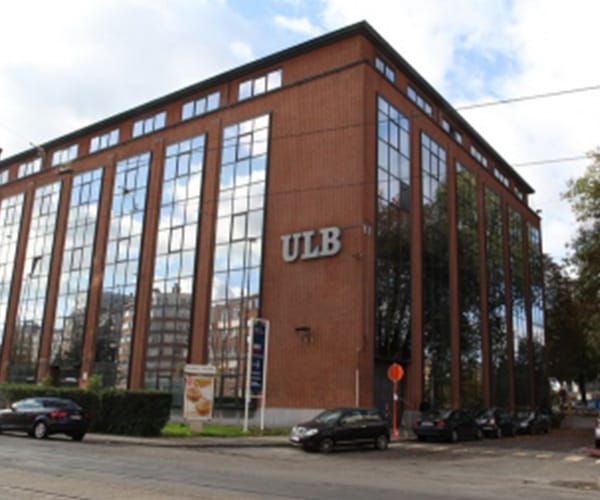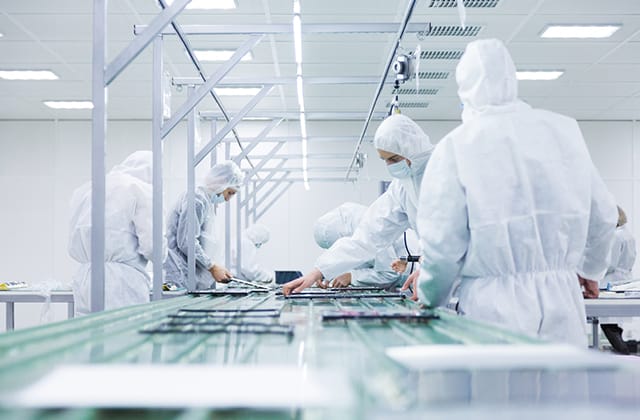The Research Department
We find traces of a Research Department within the Groupements Professionnels du Ciment (G.P.C) since 1926. Its laboratories were already located at the ULB on the Solbosch Campus in Brussels. After the foundation of the Federal Centre CRIC-OCCN, the Department resumes its Research activities in 1959 for the Cement industry (federation FEBELCEM) and in 1994 for the industry of ready-mix concrete (federation FedBeton).
Many Research projects of CRIC-OCCN are directly supported by the cement industry and the industry for ready-mix concrete and are thus realised on own Investment. The Research Department also realizes European, regional and private researches. The main subjects of those researches are the development of testing methods (which are re-used in routine by the Testing Department), the new cementmaterials and their components, the durability of cementmaterials, concrete and its components, recycling, environment and health, exposed concrete…

Following list shows the researches and guidances of the past five years. It gives a good overview of our existing know-how:
« Tefracem » ; Valorisation des Cendres Volantes d’électrofiltre de l’incinérateur de Neder-Over-Hembeek dans le béton ; RB ; 2009 – 2015.
« Nouveau Gel-Dégel » ; Classification de la résistance au gel-dégel de bétons réalisés avec les différents ciments BENOR ; F ; 2010 – 2015.
« CemCalc I et II » ; Développement de ciments ternaires à hautes teneurs en filler calcaire ; RW ; 2010 – 2015.
« Floorcrete » ; Etablir des règles pour la finition des sols industriels en béton ; F ; 2011 – 2015.
« NeoCrete » et « COM-MAT » ; Guidances bétons spéciaux et verts ; RW ; 2012 – 2016.
« Nishycem » Adjuvants hydrofuges de masse à base de silicones ; Recherche pôle Greenwin RW ; 2013 – 2016.
« RecyBeton I et II » ; Utilisation de granulats recyclés en béton dans le béton prêt à l’emploi ; F ; 2014 – 2019.
« AquaCem » ; Réutilisation de l’eau de recyclage du béton frais dans la fabrication – en particulier – de bétons à air entraîné et à haute performance ; RW/EU ; 2014 – 2016.
« STOCC » Développement de matériaux à changement de phase pour accroître l’inertie thermique du béton ; Feder RW ; 2017 – 2021.
« CON-RAS » ; Méthodes pour la prévention de la réaction Alcali-Silice ; F ; 2015 – 2018.
« Replic » Recyclage du gypse destiné à l’Industrie cimentière ; Projet Greenwin RW ; 2016 – 2020.
« TriboCem » ; Développement technologique à base cimentaire proche du marché avec la société CBR ; Cwality ; RW ; 2016 – 2018.
« BeautyCrete » ; Recherche cimentière dans le domaine du béton apparent ; 2017 -2020.
« DuraFor » ; Prévision des performances de durabilité du béton à partir de paramètres limités mesurés sur les ciments ; RW/EU ; 2017 – 2019.
« Gelavia » ; Résistance au Gel-Dégel des bétons routiers ; F ; 2016 – 2018.
« Concure » ; Mise au point d’une méthode robuste et des critères pour détermination de l’efficacité des produits de cure ; F ; 2017 – 2019.
« TurnaCalc » ; Développement technologique à base cimentaire proche du marché avec la société CCB ; Cwality ; RW ; 2018 – 2020.
« Cosmocem » ; Développement technologique à base cimentaire proche du marché avec la société CBR et cinq autres industriels ; Recherche pôle Greenwin RW ; 2019 – 2023.
« Granisec » ; Méthodologie pour l’évaluation de l’aptitude à l’emploi des granulats inertes secondaires dans le béton ; F ; 2019 – 2021.
RB = Région Bruxelles Capitale ; RW = Région Wallonne ; F = Fédéral ou prénormatif et Eu = Europe.

The Research Department also provides the technology watch of the Centre. We also realize specific tests and expertises on cement, mortar, concrete and their components. Composed of a physicist, two chemists, a geologist and an engineer in materials, it reassembles people of the specific field of cement-based materials. Their long experience can be shared with young scientists. Thus, the Department regularly takes charge of the training of new researchers through PhDs, national and international end-of-study works, traineeships… A dynamic pool of competences is developed, which can later be valued within the other Departments of CRIC-OCCN and of other contributing societies. Each member also contributes to the activities of the other Departments. This by participating in national and international standardisation activities, traineeships, audits, health & safety of the Centre, the library….

